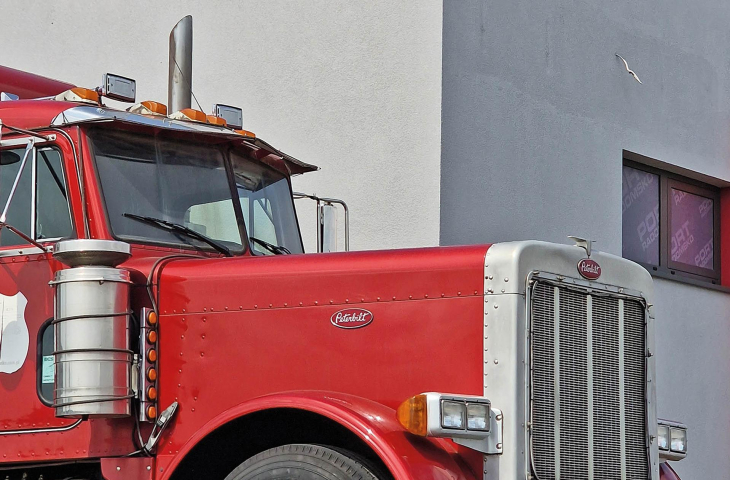my long way to Radomsko
As I embark on my fourth and final visit to Radomsko, I have some vision of the city in my head. I am after a conversation with Bartlomiej Sienkiewicz, a politician whom I respect for his erudition and knowledge of Polish reality. On the slogan "Radomsko" he said briefly, "In Radomsko? Everything will work out in Radomsko." This says a lot about this city, suspended somewhere in the middle of Polish space. Between Częstochowa and Piotrków Trybunalski... Too far from Krakow and Warsaw, but somewhere in the symbolic halfway point. Fortunately for Radomsko - by the highway. It is she who is the life-giving artery for the city. It is because of it that the economic zone has become so booming. Because after the collapse of the previous system Radomsko was not at all a capital of success. The city was painfully affected by the economic transition crisis. But it quickly began to reach its present form.
Today Radomsko is not only a land port through which thousands of trucks "pass". The multitudinous Whirlpool building has turned out to be the world's largest dishwasher factory. Radomsko is a global household appliance powerhouse, serving all of Europe, Africa and Asia. After Lodz and Wroclaw, it is the country's third hub of this industry, contributing to the fact that today Poland is among the world's top three white goods players, and is slowly becoming the largest global exporter in this industry.
Las restaurant - an island of quality, together with the nearby Zagajnik bistro create an archipelago of high quality
photo: Mateusz Zmyślony
But it's not just white goods that are being made in the Radomsko zone. There are factories for aluminum products, there is a recycling center, a whole host of modern industries. And between the huge halls - hundreds, thousands of parked employees' cars. Among them - circulating coaches, bringing more from all over the area. And these are not just low-paying jobs. The factories in Radomsko are super-modern, often robotic, automatic. This requires the employment of many engineers, high-end specialists. They are the ones I met at the Las restaurant. It is because of this industry that I was surprised to note immigrants from Spain, India, Italy on the streets of Radomsko.
I read about Radomsko, conduct more interviews. What emerges from all this, in my opinion, is an archly interesting portrait of a medium-sized Polish city that manages to succeed. A city that is not one-dimensional, because it is a city of big trucks, the white goods industry and elegant chairs. These are great potentials.
When I set out on my last trip to Radomsko before writing this text, I take a different route than usual. It leads through the Jura Krakowsko-Czestochowska region. I drive through Lelów, where I am for the first time in my life. Something is not quite right here. The village has an intriguing market square, the sensitive senses of an urbanologist are suddenly overloaded with some inexplicable genius loci. "I'll have to check out this Lelów on my way back," I think to myself. Looking at the signpost leading to the nomen omen Koniecpol, I sense a different Poland, different from the one I use every day. Every country has its rust belts, every country has some Chelyabinsk, some Wąchock, some side-by-side existing oases of success and spaces that history and the present have forgotten. And each of these places is a potential hit.
Plejada ice cream shop in a shipping container
photo: Matthew Zmyślony
On my way to the oasis of success in Radomsko, this is how I feel about passing Poland. Seen from the road, which besides me is mostly used by local tractors. Almost no one drives this way, so even the excuse to visit these places because of a caught flat tire falls away. I promise myself to get off the highways onto these side roads as often as possible. I'm fascinated by this world a little off to the side.
Finally, Radomsko. With a palpable inner tension I set off towards Fameg. From my bicycle, I can see the modern "Showroom" sign on the aging factory building. I roll inside and grab my head. What a design! Dozens of beautiful furniture, modern arrangements, wooden works of applied art. I am - very seriously - in shock. Bent wood can be incredibly beautiful, and here is literally everything that can be "bent" from it: from minimalist and aesthetically pleasing, comfortable, light and durable chairs (Thonet's classic) to fancy rocking chairs, cradles, hangers and carts that look more like sculptures than furniture.
It's time to sum up. Radomsko, a city about which I had no idea, no significant associations, completely surprised me. In fact - it knocked me off my feet. It is an oasis of success, a very strongly economic city with interesting potential. Radomsko is, in simple terms, a city of big trucks, white goods industry and fantastic furniture, so it can have any ambitions related to industrial design and design. It is also a city that needs to provide the right leisure industries for its growing cosmopolitan population of highly skilled workers from around the world, including a sizable group of engineers. Today, their needs are met by "islands of quality" such as the Las restaurant, the Zagajnik bistro and the Plejada ice cream shop. It would be good if there were more and more of these islands - and the role of the city and its residents is to increasingly consciously create an internally cooperative archipelago out of them (see the idea "Islands and Archipelagos" by Hausner & Zmyślony).
Normobaria and Metallurgy - Radomsko can surprise.
photo: Mateusz Zmyślony








































































